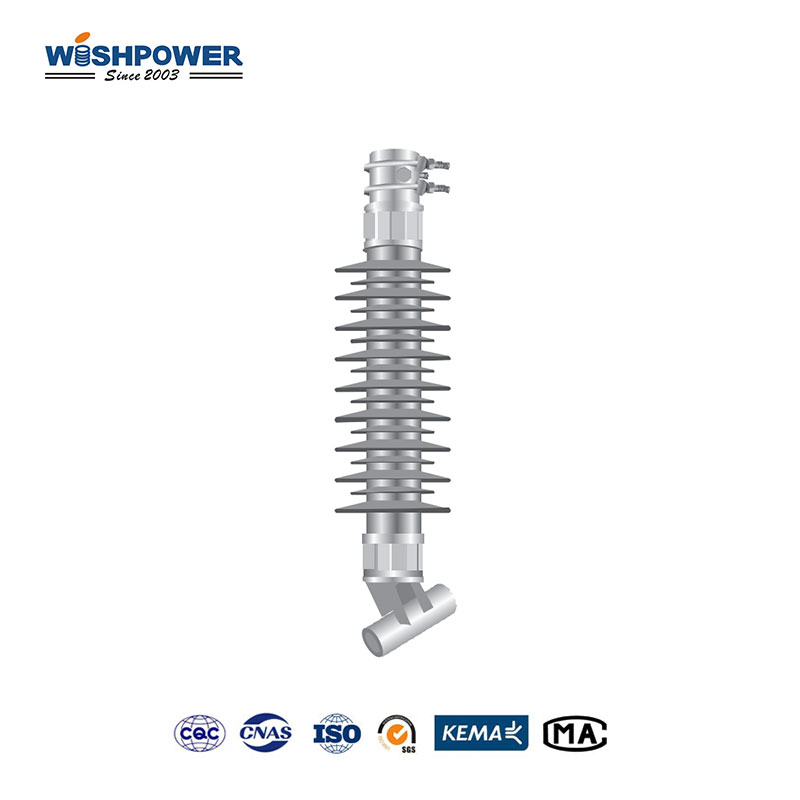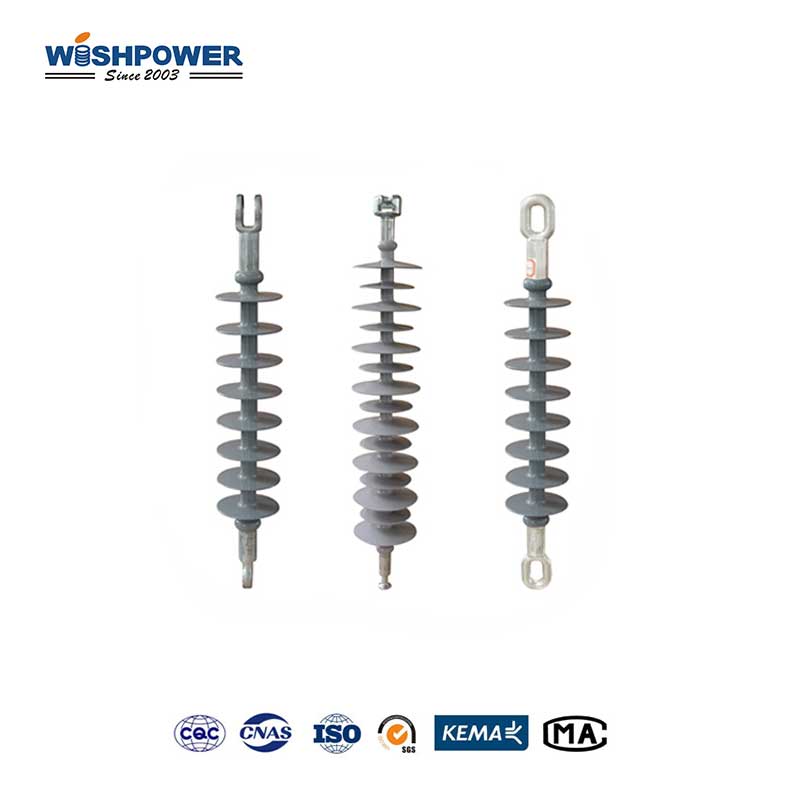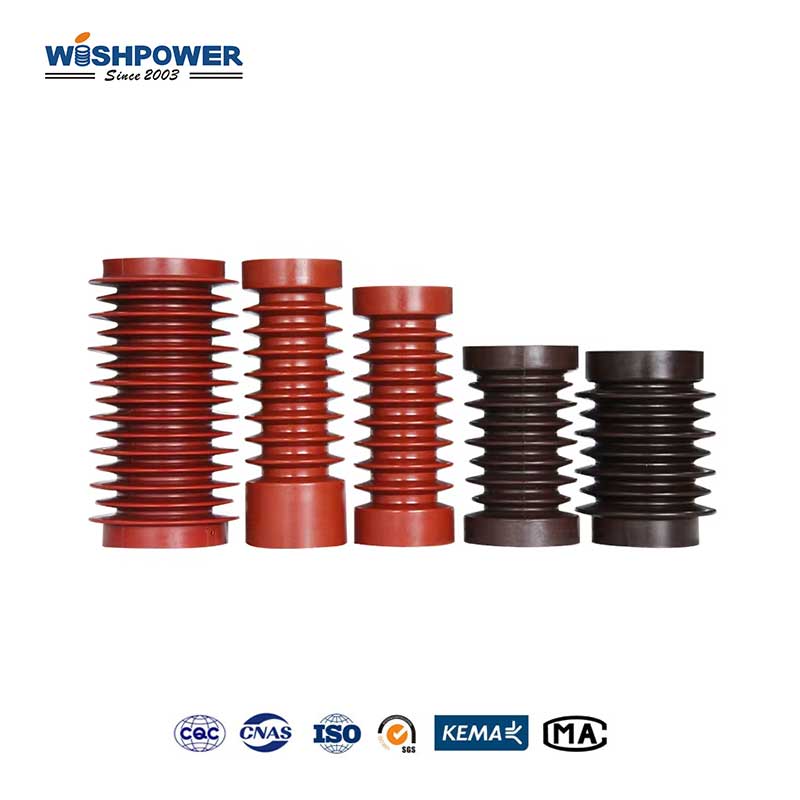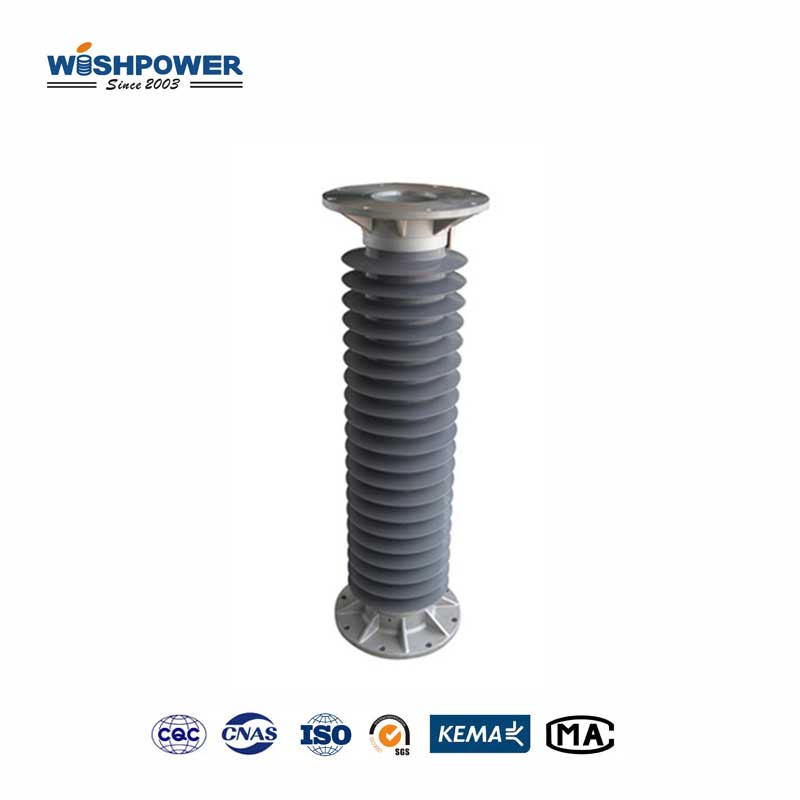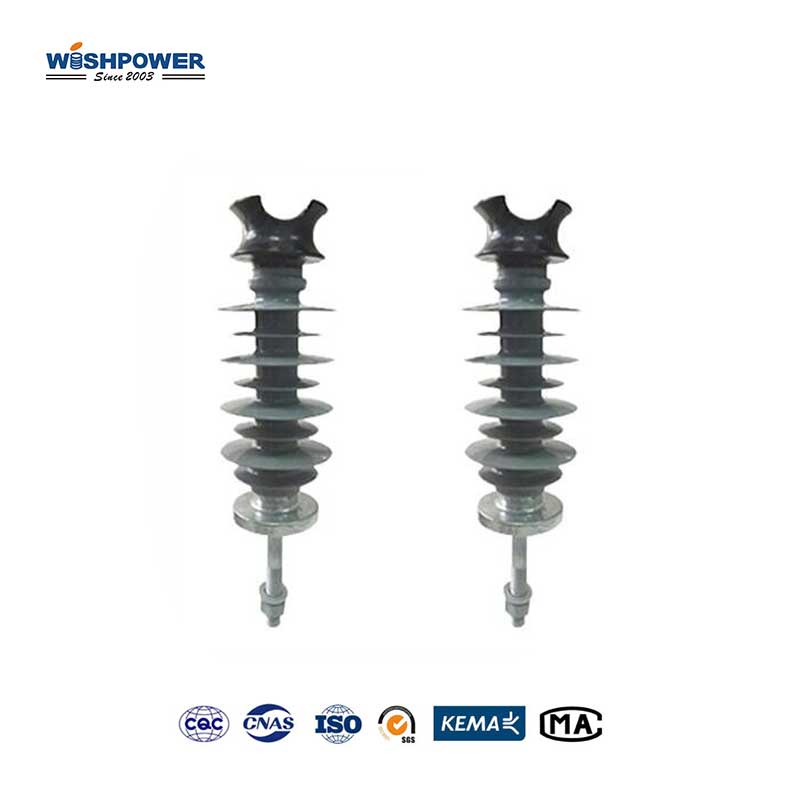Specification
| Product Type |
FQD-25/12 |
FQD-25/16 |
| Specified Voltage |
25 kV |
25 kV |
| Specified Mechanical Tensile Failing Load |
12 kN |
16 kN |
| Section Length |
835 mm |
835 mm |
| Min. Insulation Distance |
480 mm |
480 mm |
| Min. Nominal Creepage Distance |
>1450 mm |
>1450 mm |
| Lightning Impulse Withstand Voltage(Peak Value) |
270 kV |
270 kV |
| Artificial Pollution Power Frequency Withstand Voltage(Salt Deposit Density) |
32 kV |
32 kV |
| Power Frequency Withstand Voltage Test-Wet |
130 kV |
130 kV |
Wishpower has been specializing in the insulator industry for more than 20 years. We have our own insulation material company and a professional and leading R&D team. Please get professional products and solutions directly through this website or info@wishpower.net
What is the Arch Bracket Support Insulator?
Arch Bracket Support Insulator is a kind of electrical insulator primarily used to brace and also to insulate the conductors in Overhead power lines. It comes with a bracket pattern-like formation of the arch which effectively supports the conductor and at the same time insulates electrically the conductor from the supporting structure like a pole or tower. This insulator is normally constructed from materials such as porcelain, glass, or composite polymer that is strong mechanically and also does not degrade in the environment. Several benefits come with this design; mechanical stability is enhanced, thus suitable for high voltage applications. Its shape also means that the mechanical stresses are distributed over a wider area and for this reason mechanical failures are minimized. Furthermore, thanks to the peculiar form of the insulator, actions such as installation and maintenance of the power transmission and distribution equipment are made easier and can / promote the reliability of the system.
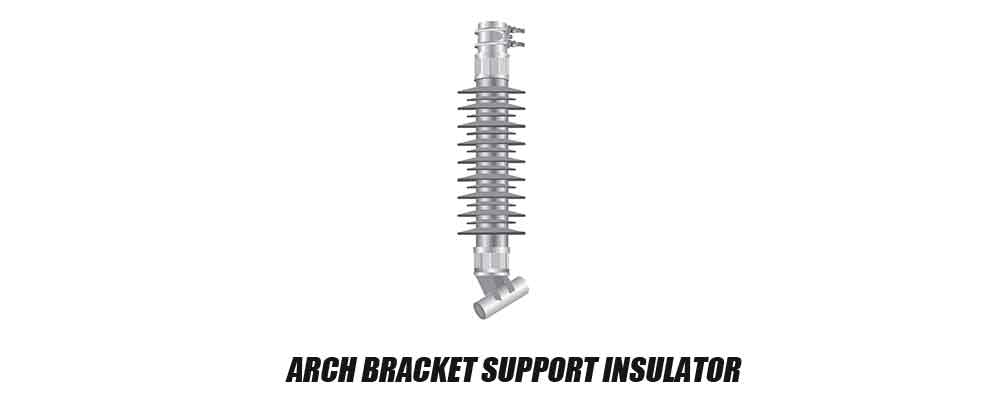
Unique Features
- Enhanced Load-Bearing Capacity:
The arch bracket design offers more mechanical rigidity which will enable it to handle complex mechanical loads and mechanical stress.
- Improved Stress Distribution:
The arch structure splits the mechanical load and stress so they do not pull on the insulators, further increasing the lifespan of the structure.
- Stable Support:
Due to the bracket-like configuration being superior in roofing conductors, the movement and consequential damage such as the effect of wind and vibration on the roofing conductor are remarkably prevented.
- Ease of Installation and Maintenance:
This design provides for easy application and servicing of the unit and takes less time as compared to the other types of insulators.
- Versatile Application:
Due to the shape and firmness of the item support insulator, they are acceptable for many purposes including exterior construction such as AC high voltage transmission line construction and various kinds of industrial constructions.
Benefits
- Enhanced Safety:
This means that the mechanical strength and stability are improved and this translates to better safety levels of the insulator, the transmission, and distribution network.
- Longevity:
The design of the it is strong and even distributions of stress make it to last longer thus little or no frequent replacement.
- Cost Efficiency:
This is beneficial in the long run because it does not require frequent maintenance and significantly increases the durability of power infrastructure hence it is an economical solution.
- Reliable Performance:
Its compatibility to maintain a constant position of the conductor with the complicated environment is another important factor that ensures its reliability.
- Adaptability:
The design of the insulator also enables it to be applied in several regimes, hence the arch insulator’s flexibility of operation depending on the voltage levels and the environment without a significant reduction in the performance.
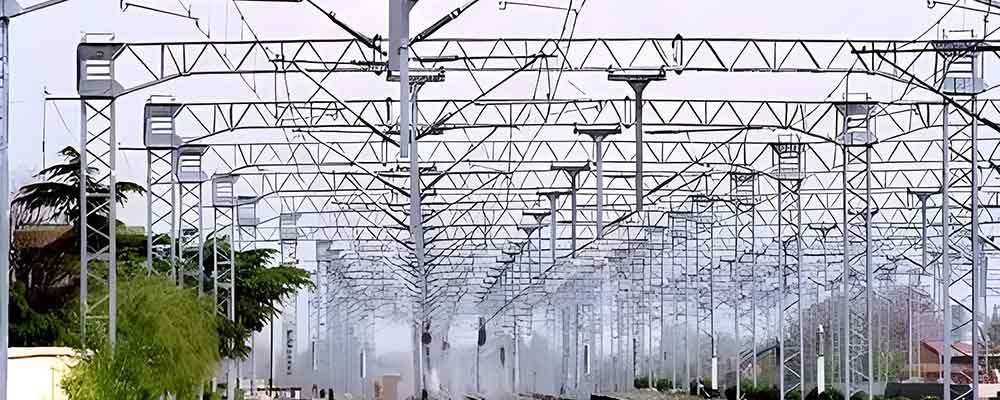
Application
- Telecommunications:
Used in high voltage lines connected to the communication towers; thus, providing reliability in telecommunication networks.
- Utility Infrastructure:
Used in utility grids for accessory overhead conductors, that enhances the stability as well as the efficiency of the energy distribution system.
- Construction Projects:
Used in construction areas for power supply where a temporary power supply is needed or for insulation of temporary high voltage lines.
- Urban Lighting:
In street lighting where the structures need high mechanical strength and stability for mounting overhead power lines/fixtures.
- Mining Operations:
This electrical insulator is used in mines for controlling high voltage on equipment and establishment used for effective and safe distribution of power.
About Wishpower
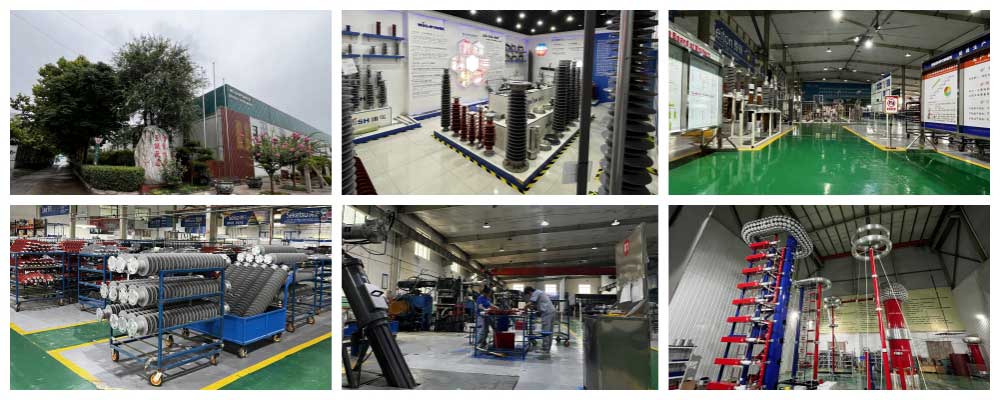
Certificate
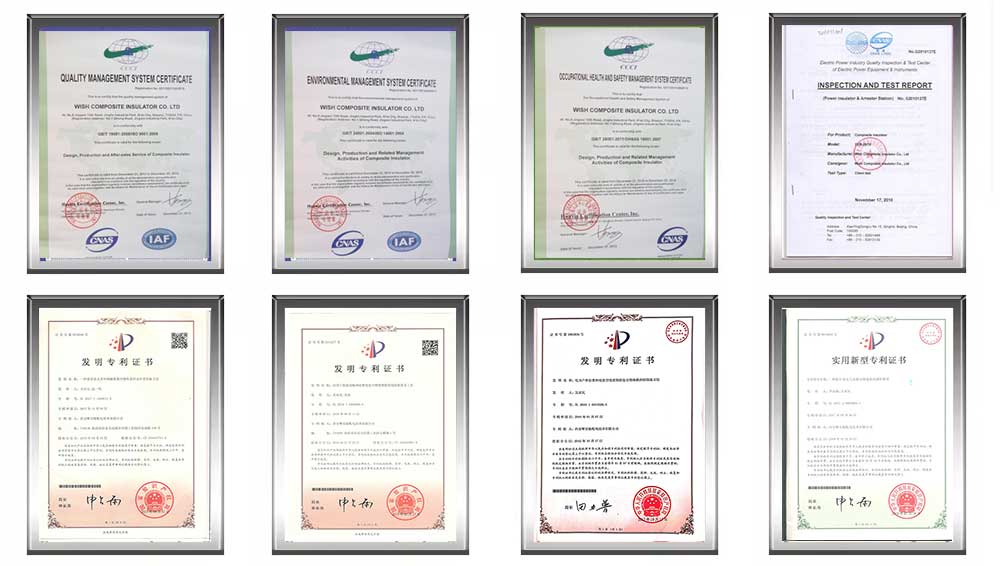
Hot Tags: Arch Bracket Support Insulator, Composite Insulator, China, manufacturers, ISO factory, wholesale, KEMA, high quantity, best, price, low to high voltage














